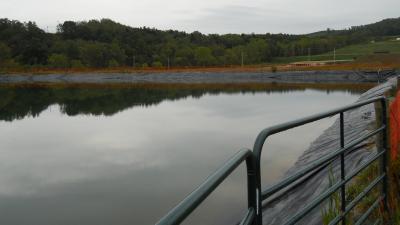Natural gas proliferation has been a huge boon for the environment - CO2 emissions have plummeted among the U.S. energy sector, primarily because coal emissions have been knocked back to early 1980s levels. But there are concerns by environmentalists that modern hydraulic fracturing ("fracking") has risks, and it has been implicated in everything from earthquakes to methane in water even to claims it will cause the earth to deflate.
Chemists think about chemicals and at a presentation at the 248th National Meeting&Exposition of the American Chemical Society (ACS), William Stringfellow, Ph.D., an ecological engineer at the University of the Pacific and Lawrence Berkeley National Laboratory, notes that out of 190 commonly used compounds in fracking, he was able to find little information about the potential health risks of about one-third, and eight are toxic to mammals. That is no surprise, hazardous chemicals are used in all kinds of applications and no one wants people to drink them.
Stringfellow says a review of fracking contents can help separate the hyperbole, such as flaming water, from realistic concerns over the drilling practice. Fracking involves injecting water and a mix of chemical additives into rock formations deep underground to promote the release of oil and gas. Should the public be worried about it? Are the chemicals really just food additives, like in ice cream, or are toxic materials making their way into groundwater?

How worrisome are fracking fluids? Credit: Doug Duncan/U.S. Geological Survey
To find out, Stringfellow and colleagues compiled a list of substances commonly used in fracking. They include gelling agents to thicken the fluids, biocides to keep microbes from growing, sand to prop open tiny cracks in the rocks and compounds to prevent pipe corrosion. Their analysis revealed that fracking fluids do contain many nontoxic and food-grade materials, though Stringfellow notes that if something is edible or biodegradable, it doesn't automatically mean it can be easily disposed of, so vigilance and standards remain important.
"You can't take a truckload of ice cream and dump it down the storm drain," he says. "Even ice cream manufacturers have to treat dairy wastes, which are natural and biodegradable. They must break them down rather than releasing them directly into the environment."
As is well known, most fracking compounds require treatment before being released - as is done. Environmentalists claim that number is in the thousands, and that was never the case, but the new analysis did identify eight substances, including biocides, that could be toxic to mammals and so it needs to be certain they are treated properly.
"There are a number of chemicals, like corrosion inhibitors and biocides in particular, that are being used in reasonably high concentrations that potentially could have adverse effects," Stringfellow says. "Biocides, for example, are designed to kill bacteria — it's not a benign material."
Next they will examine the environmental impact of fracking fluids on aquatic life. They say that for about one-third of the compounds identified as ingredients in various fracking formulas, they don't yet have much information about toxicity and physical and chemical properties.






Comments